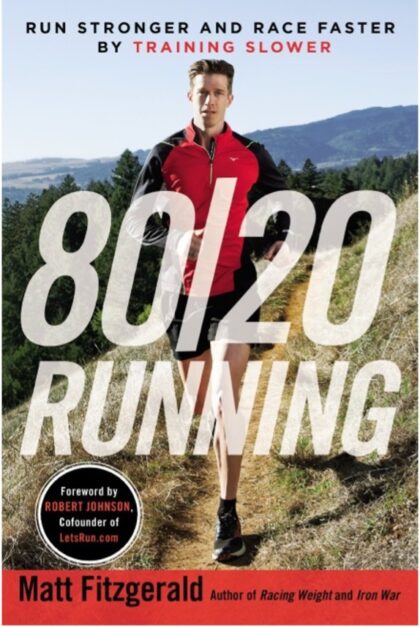Lots of soldiers come to their Physical Training Instructor asking for advice on how to get a faster Basic Fitness Assessment. Sometimes they want to simply at least pass. Sometimes they want to achieve a faster pace or a milestone personal best. Other times they want to extend their endurance and competitively complete a half-marathon, marathon or ultra-marathon. What are the secret raining sauces, they ask?
Endurance sport and nutrition writer Matt Fitzgerald explains the radical idea that the best training comes from slowing down, or at least slowing down for 80% of training and then training hard for the remaining 20%. Training too hard and too often is very common, but also very detrimental to top performance. Talk to PTIs and they will likely tell you this, or read Matt Fitzgerald and you will see the research and principles behind it.
The key is to do 80% of training at an effort at least 60% MHR (maximum heart rate) but below the “ventilator threshold” (when breathing abruptly deepens at 77-79%MHR, just below the lactate threshold) (for me back when I read the book 105-130 or now in 2018 93-136BPM), and 20% at moderate and high intensity to prepare for your specific race (e.g., endurance runners will best do as much or more moderate as high intensity because that is more race specific). Runners need both aerobic and faster efforts, but what is not helpful is staying with the greyzone of moderate intensity for too much of training. We need to “slow down” in order to speed up.
Fitzgerald explains how it improves fitness as well as skill (including an ideally high stride rate). He explains historically how sports scientists have mapped this trend and how top athletes log this proportion of training. He offers training plans for 5k, 10k, Half Marathon and Marathon prep, including extolling the virtues of periodization, increasing volume gradually, and specific sessions including: uphill treadmill walking, recovery runs (in zone 1), foundation and long runs (zone 1 and 2), and fast finish runs (finishing with zone 3), tempo runs (sandwiching a zone 3 effort between zone 1 and 2 for warm up and cool down) or cruise intervals (long zone 3 intervals interspersed with zone 1 recovery; e.g., 4x 10 minutes zone 3/3 minutes zone 1), and hill repeats, short/long/mixed intervals and speed play in zones 4 and 5. I also noted how he suggests using www.mcmillanrunning.com for determining pace targets. Fitzgerald discusses cross-training and how 80/20 training can help people pursuing weight loss and triathlon goals.
This is a valuable resource, especially to help those of us tempted to always speed up to be inspired to slow down much more often in order to build a solid aerobic base. 80/20 Running is ideal reading for anyone preparing for their next personal best as a runner, whether for a marathon event or BFA.
About the Reviewer
Darren Cronshaw is a Chaplain who has served at Army School of Transport, Puckapunyal, 1st Recruit Training Battalion, Kapooka and Defence Force School of Signals. He is also Professor of Practical and Intercultural Theology with the Australian College of Ministries (Sydney College of Divinity). His hobby is pushing the boundaries of resilience in Ironman triathlons and is a member of ADF Triathlon Club (ADFTC).

